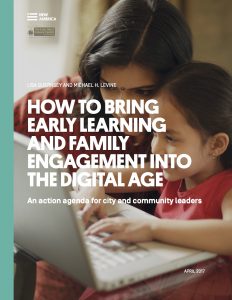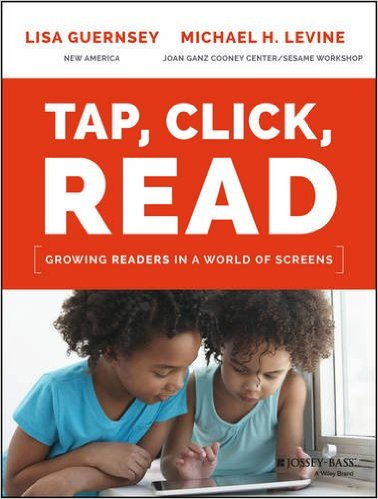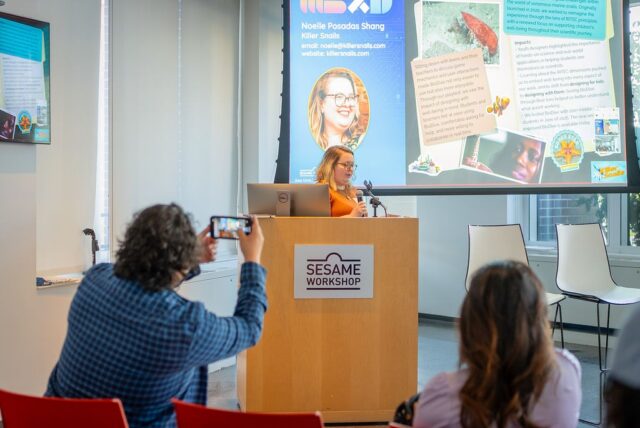
Imagine these everyday scenes: A father and his two-year-old are in their library’s bookmobile, checking out electronic and print picture books they just enjoyed at story time. Kindergartners select photos and drawings for their school’s annual multimedia slideshow. A grandmother and teacher share a laptop, clicking on videos that demonstrate Spanish-language word games for school and home. Each day, parents, caregivers, and children are building language and literacy skills for the 21st century, perhaps without even realizing it.
Every community in the United States has the potential to transform itself into this kind of ecosystem that supports families and promotes digital inclusion. Resources for Digital-Age learning already exist in libraries, schools, multimedia spaces, and through parents’ personal smartphones, but localities are not often tapping into them to help families in need. Other local leaders do seek out digital approaches but risk chasing after what is shiny and new if they lack the resources to critically evaluate new tools and technologies.
Promoting early learning through the support and empowerment of families—especially those who are under-resourced—has become an imperative for education leaders nationwide. New America and the Joan Ganz Cooney Center at Sesame Workshop have joined forces to document initiatives using digital tools to connect with vulnerable families and improve educational outcomes. Interactive tools such as on-demand video and text messaging are being used to inspire and reassure parents, to share learning materials between formal and informal settings, and to bring parents closer to their children’s learning. Some communities are also taking steps to prepare educators as media mentors to help families and children be choosy about media and learn how to use digital tools for learning.
But so far, these efforts are sporadic and fragile. Very few are fully sustainable or ready to scale up. Community leaders need a plan. Our hope is that this agenda will generate that planning. Think of it as a companion to existing guidance, such as the Building Blocks for Success framework from the Center for the Study of Social Policy and the National League of Cities, which is already helping communities to build early learning communities. Here we nudge leaders to modernize and think digital as they do so. We describe four actions to help community leaders prioritize: take stock, develop professional learning programs, invest in physical infrastructure, and create a cycle of continuous improvement.




